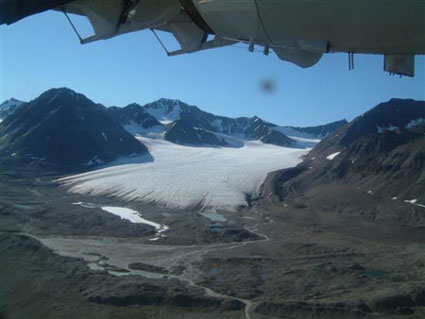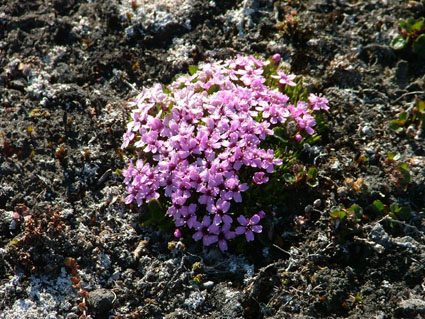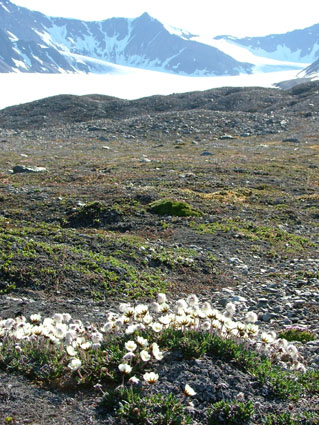Plant growth in areas exposed by glacier retreat |
|
 |
|
Aerial photograph of retreating glacier Midtre Lovénbreen in Svalbard |
|
In many mountainous regions of the world, areas that were formerly covered by glacier are now exposed, and are potentially available for colonization by plants. In a recent study, a group of French researchers report on the plants that have appeared in glacier forelands—newly exposed soil—in Svalbard, islands to the north of Norway. This case, at least, shows that plants do not quickly cover these areas. |
|
The particular glacier that they study, Midtre Lovénbreen, began to retreat around 1880, and accelerated its retreat since the 1930s. They draw on aerial photographs from earlier periods and a careful analysis of vegetation types in different areas. They find that the processes of revegetation are slow, often taking 70 to 100 years to reach a stable climax community in this cold high-latitude environment. Their work also shows that the exposed surfaces are quite dynamic, being shaped by erosion and by the movements of streams that shift courses; these processes can further delay the establishment of vegetation.  |
 |
Iceland poppies growing near Midtre Lovénbreen |
|
| Saxifrage growing near Midtre Lovénbreen | |
| (All photos by Gareth Rees) | |
Moreau, Myrtille; Mercier, Denis; Laffly, Dominique; and Roussel, Erwan. 2008. Impacts of recent paraglacial dynamics on plant colonization: A case study on Midtre Lovénbreen foreland, Spitsbergen (79°N). Geomorphology 95:48-60 |
|